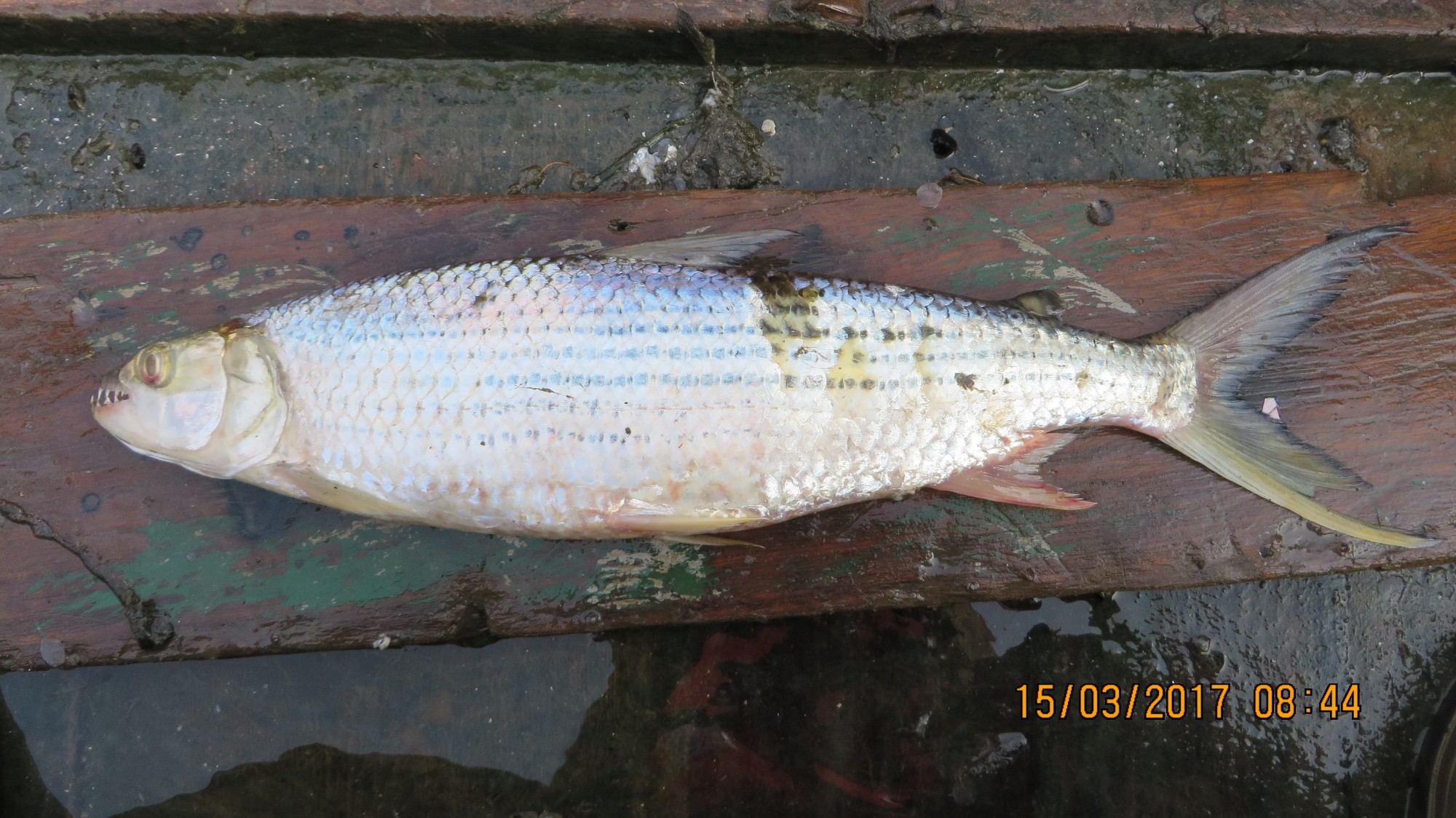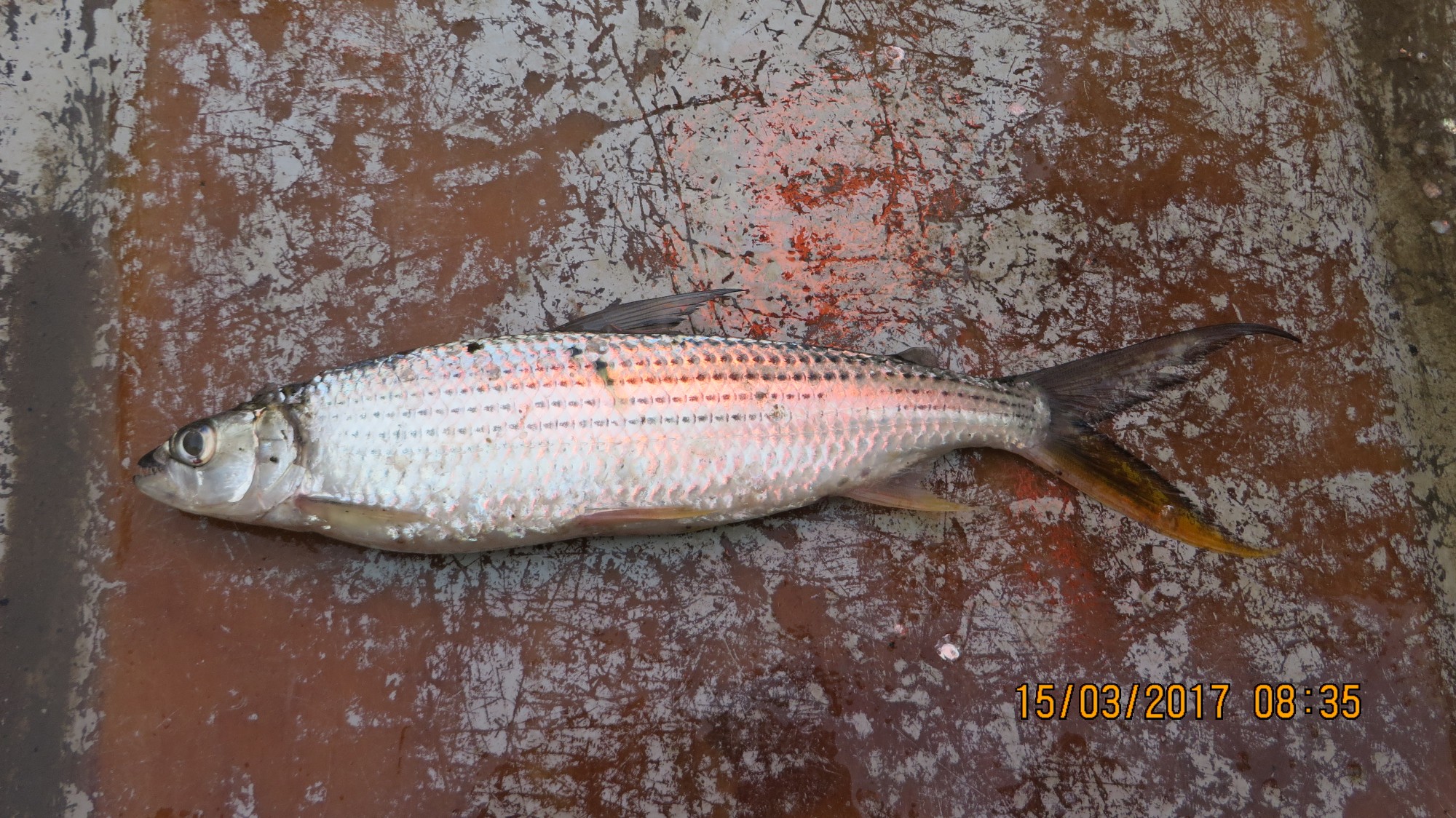Common names:
Elongate tigerfish, Tiger fish
Lunyoro/Lugungu: Ngassa Alur: Ngasia Jonam: Ngala
Taxonomic tree
Kingdom: Animalia
Phylum: Chordata
Class: Actinopterygii (ray-finned fish)
Order: Characiformes (Characins)
Family: Alestidae (African tetras)
Genus: Hydrocynus
Species: Hydrocynus forskahlii (Cuvier, 1819)
Number of Occurrancies: 104
Etymology(based on Scharpf & Lazara, 2019)
- Hydrocynus: hydro, water; kyon, dog, transliteration of local Egyptian name Kelb el bahr, or water dog, referring to voracious behavior of H. forskahlii.
- forskahlii : in honor of Swedish explorer and naturalist Peter Forsskål (also spelled Forsskåhl, 1732-1763), who reported this species as Salmo (=Alestes) dentex in 1775.
Synonyms: click here to view IUCN status
Type locality: Nile River, Egypt. Holotype at Muséum national d'Histoire naturelle (MNHN)
Distinguishing characters for the genus
- Large mouth that is laterally expansible; teeth firmly fixed, large and fang-like, visble when the mouth is shut
- A second series of teeth lies below the exposed and functional outer teeth
- Nostrils close together separated by a flap of skin
Distinguishing characters for the species
- Depth of the body contained up to 4-5.5 times in standard length, and length of the head 4-5 times
- Snout 0.33-0.25 head length; eye with vertical adipose lids; mouth extending to below the nostrils or as far back as anterior orbital margin.
- Large teeth, 10-12 and 8-12 in the upper and lower jaws, respectively
- Dorsal fin with 9-11 rays, the first two unbranched
- Caudal fin deeply forked, the lobes long and pointed
- Lateral line with 48-53 scales; 2 scales between the lateral line and a scale-like process at the base of the pelvic fin.
- Color is silver or silver-yellow, a drak longitudinal line running through each scale row above (and including) the lateral line and often through the line immediately below. Dorsal and adipose fin grey, pectoral and pelvic fins flushed with orange-yellow, as are inferior caudal lobe and the anterior part of the anal fin. Both caudal lobes are outlined in black along their posterior margins.
Taxonomic remarks: The species closely resembles H. vittatus, but is differentiated by a bigger distance between dorsal and adipose fin (1.5-1.75 times in distance between the snout tip and the first dorsal ray compared to 2-2.5 times in H. vittatus), grey adipose fin, smaller and many lateral line scales (48-53 compared to 45-48 in H. vittatus)
Distribution in Uganda: Lakes Albert, the Albert and Murchison Niles
Occurence: Native
Habitat: Pelagic, present in both inshore and offshore waters, including those of considerable depth and forms shoals; potamodromous
Feeding: Piscivore, cheifly small fishes (including Nile perch fry and haplochromines), but also insect larvae and crustacea.
Biology: No information is available on breeding for the Ugandan populations.
Economic importance/End use: Supports a lucrative commercial fishery on Lake Abert and Albert Nile. Data for 2012 suggests annual catches were about 7000 tonnes, with a beach value of $6.6 million (Mbabazi et al. 2012).
IUCN conservation status: click here to view IUCN status
Threats: Fishing
Main references
- Greenwood PH. 1966. The fishes of Uganda. The Uganda Society, Kampala. 131 pages.
- Sharpf C, Lazara J.K. 2019. Fish Name Etymology Database v17. www.etyfish.org
- Mbabazi D, Taabu-Munyaho M, Muhoozi L.I, Nakiyende H, Bassa S, Muhumuza E, Amiina R, Balirwa J. 2012. The past, present and projected scenarios in the Lake Albert and Albert Nile fisheries: Implications for sustainable management. Uganda Journal of Agricultural Sciences, 13 (2): 47-64.



